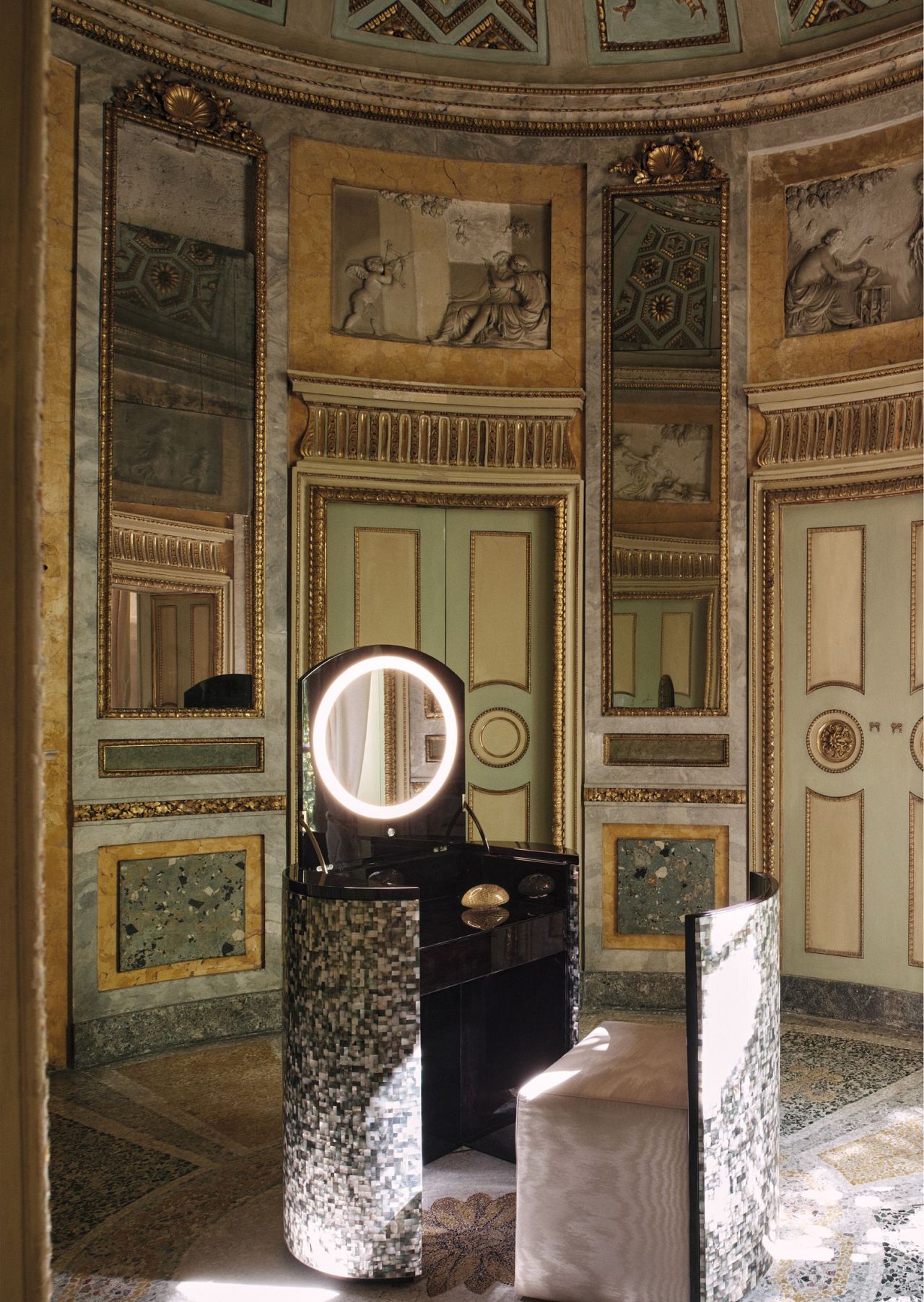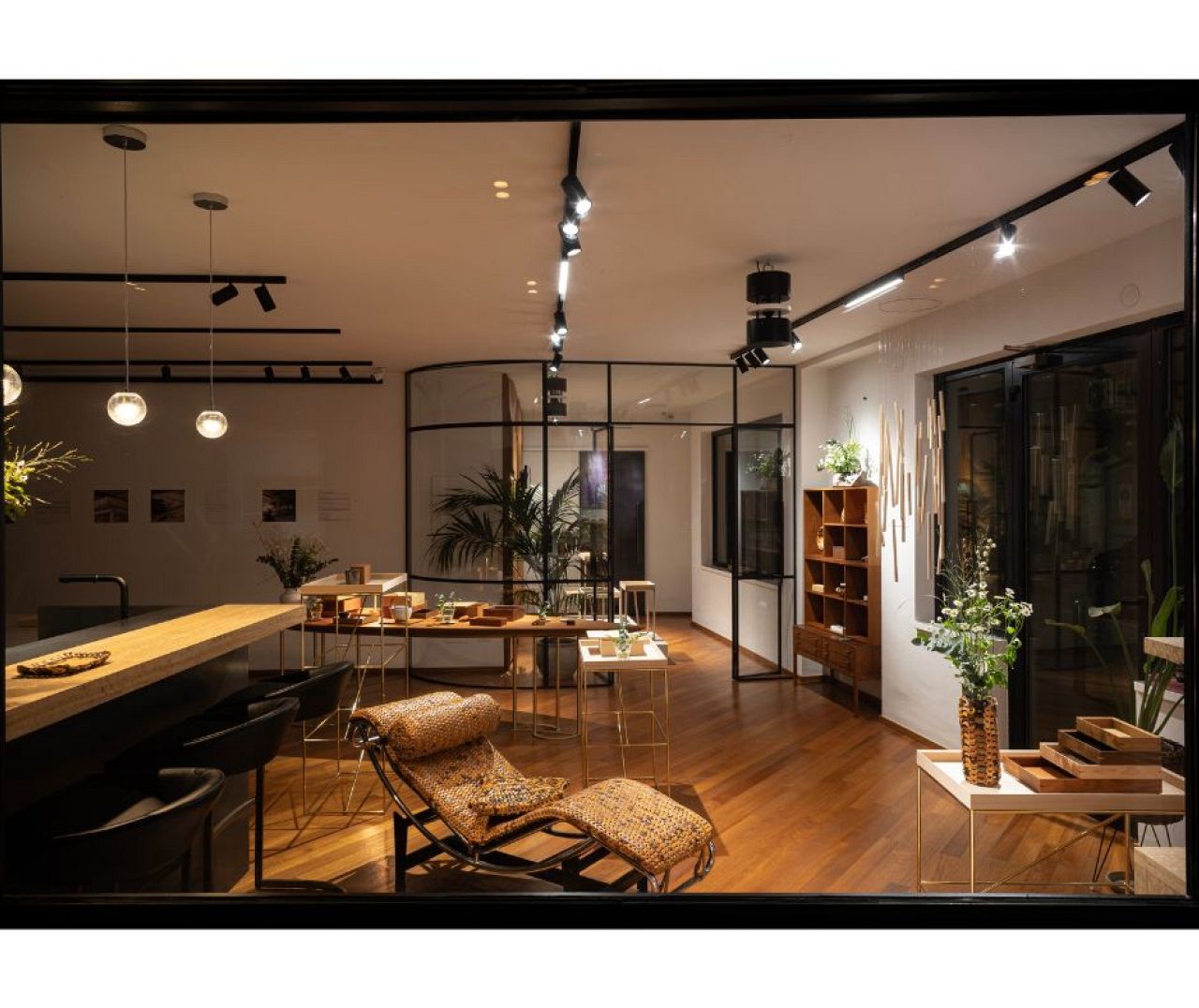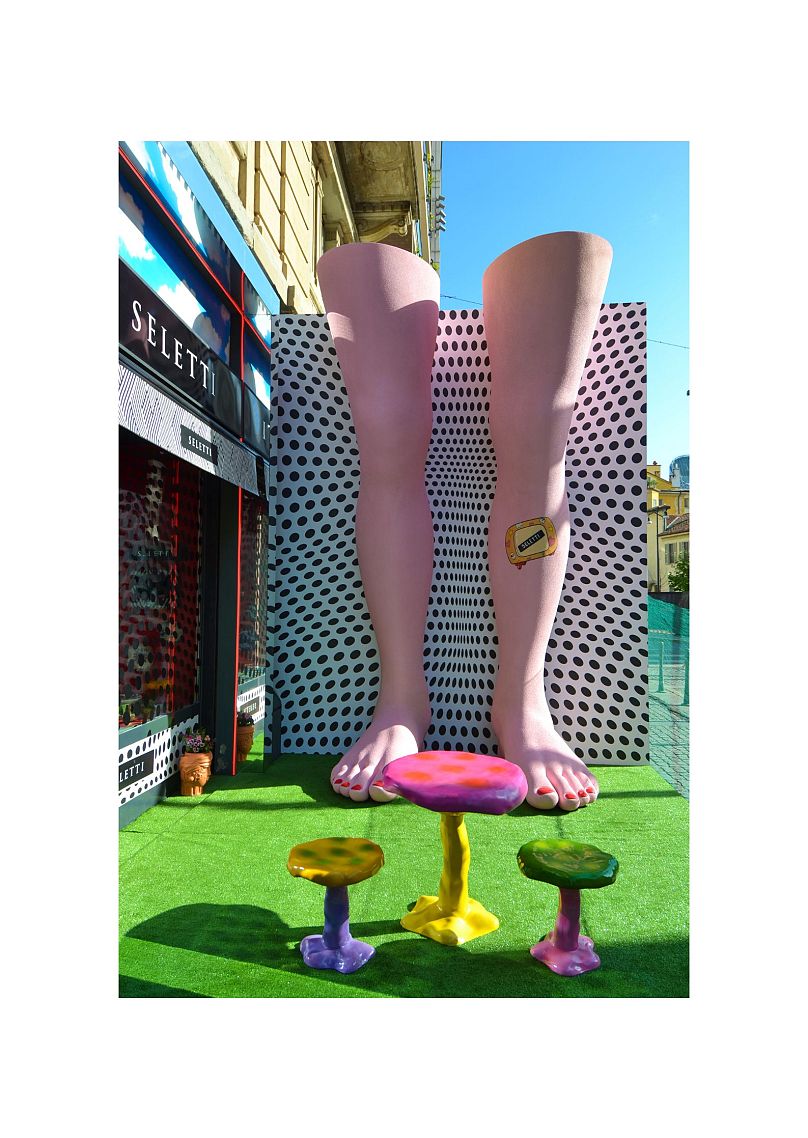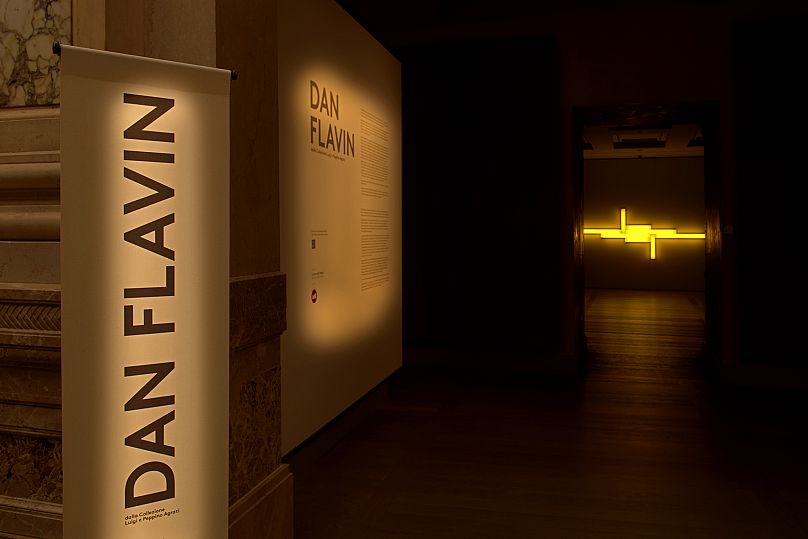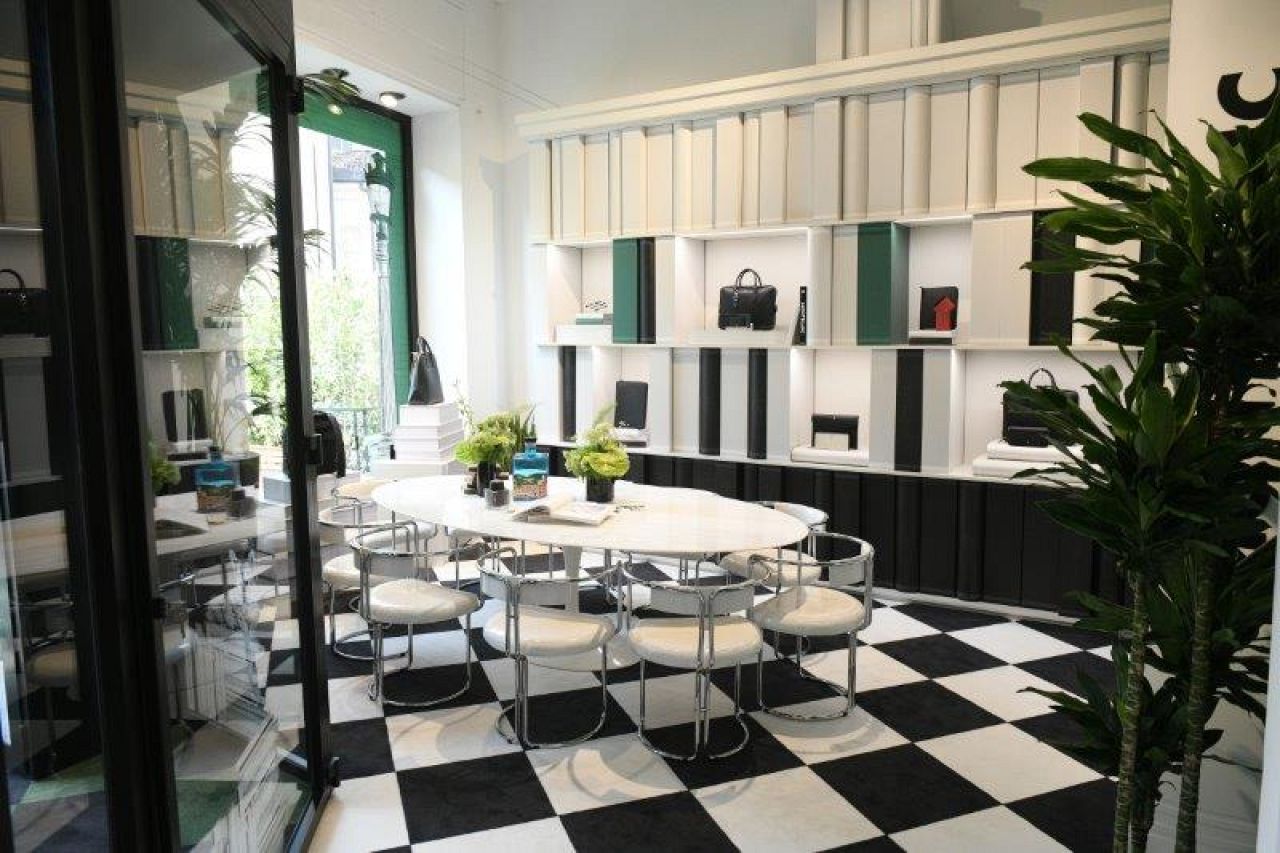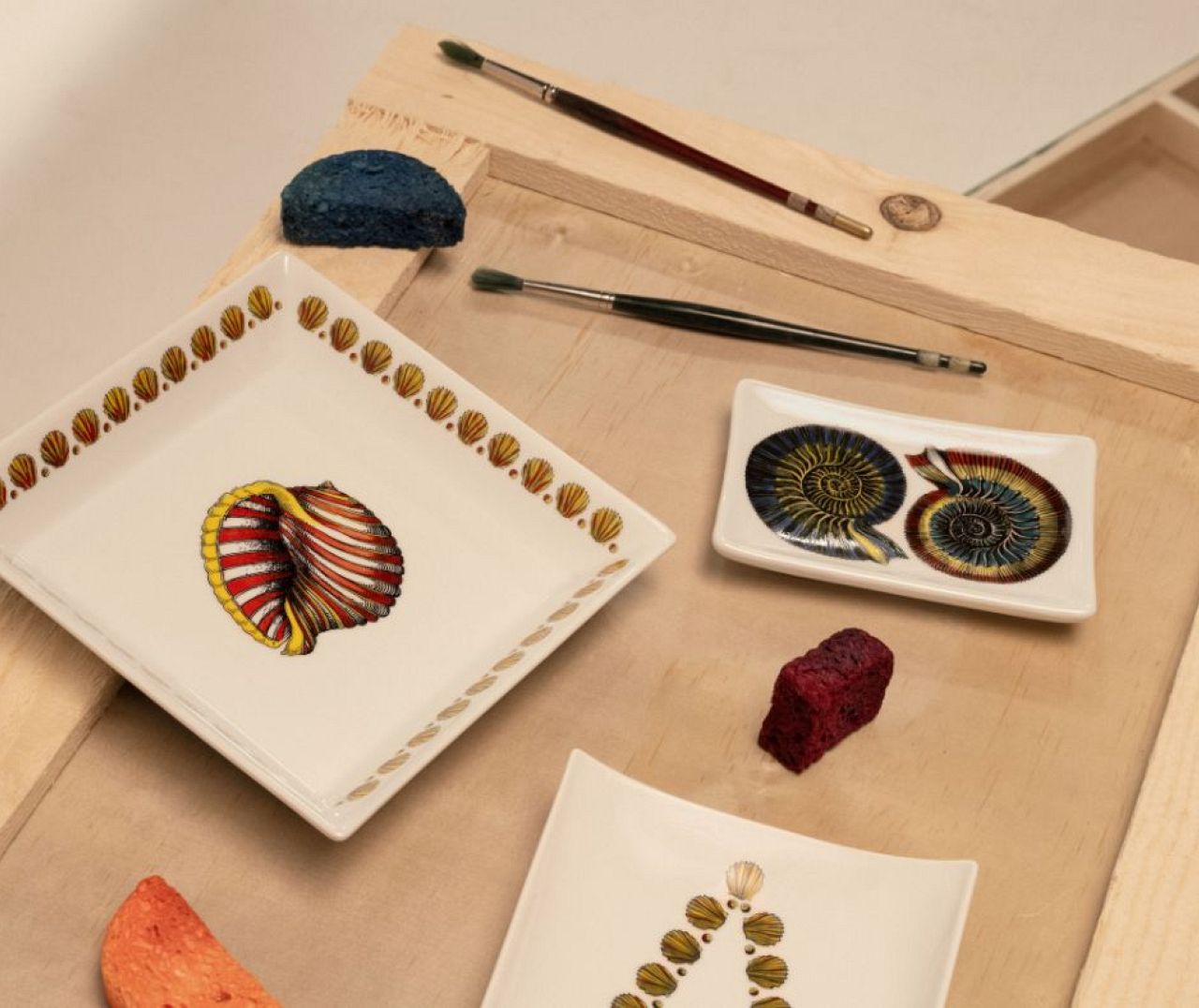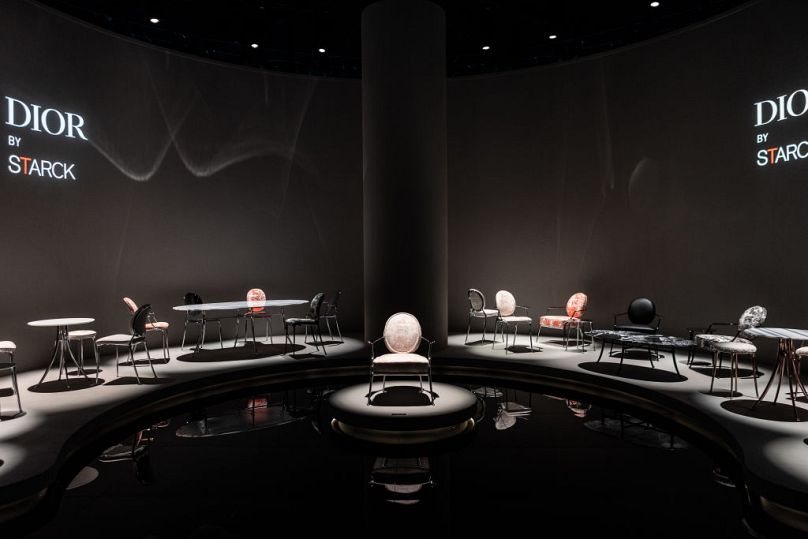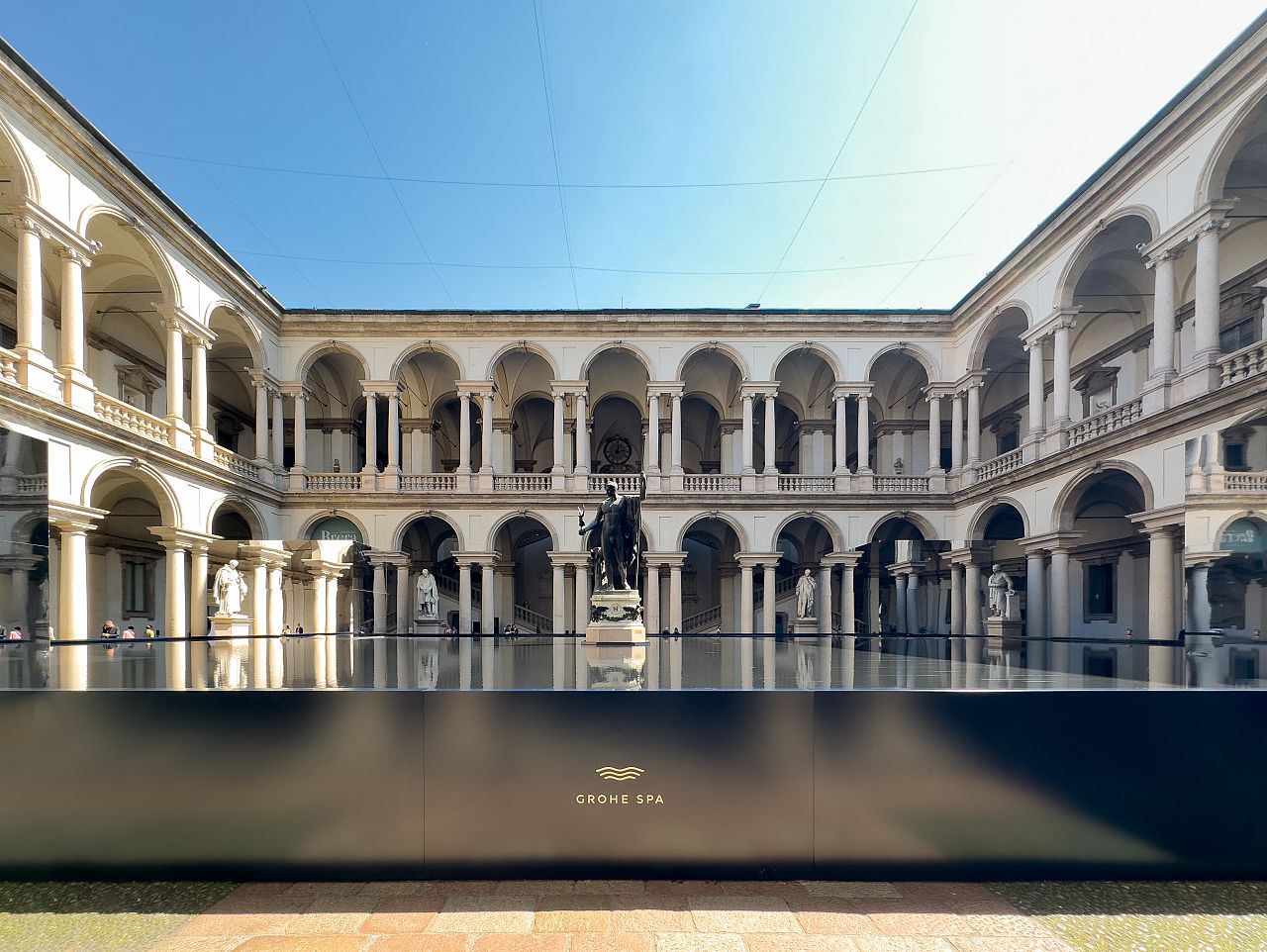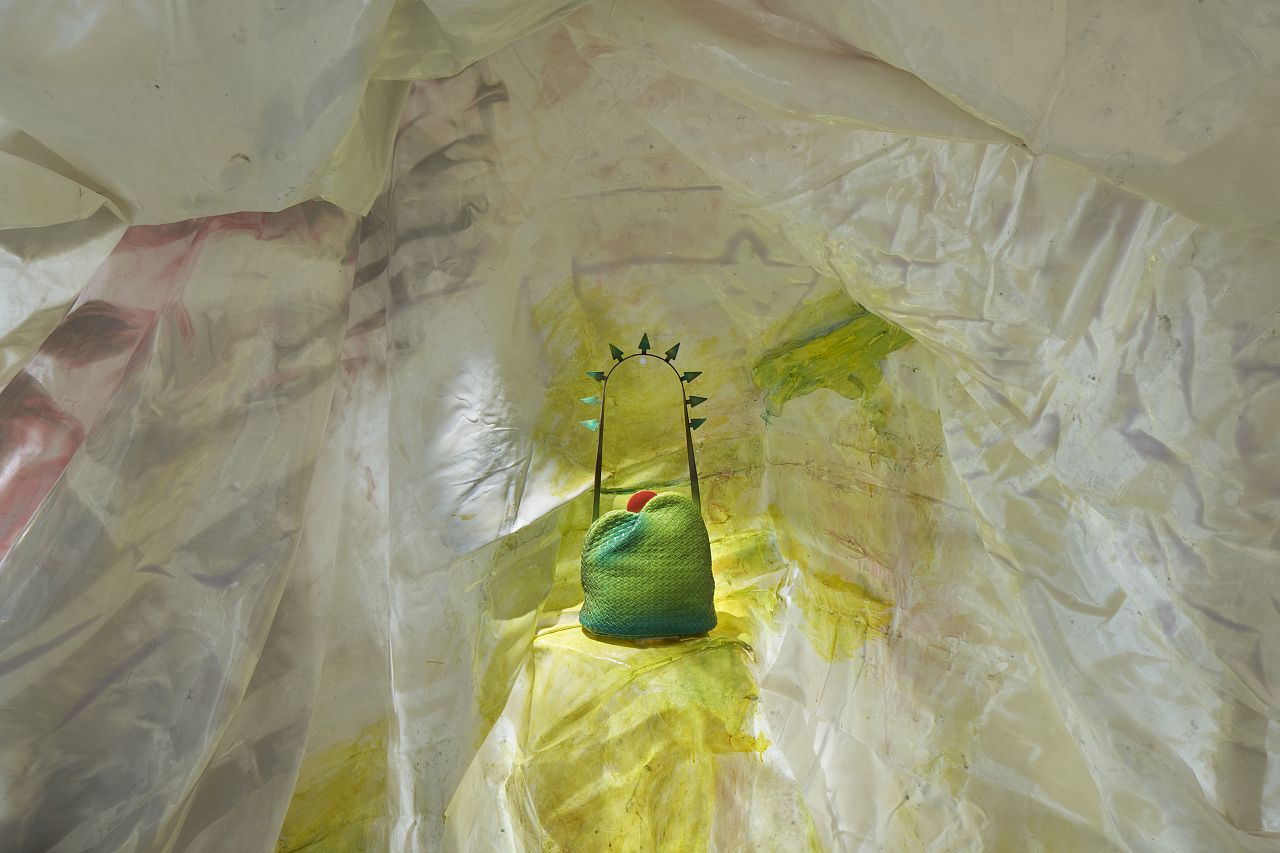Back with a bang after the pandemic, Euronews Culture spent Milan Design Week exploring the best of new and innovative design at the iconic Salone and here we share our standouts from the historic event.
Euronews Culture spent a wonderful week last month at the Milan Furniture Fair - or Salone Internazionale del Mobile di Milano - for the event’s 61st edition. It was the first Salone since the COVID-19 pandemic and attracting hundreds of thousands of visitors.
It’s the largest fair of its kind in the world, showcasing the latest and best in furniture, homewares and design from across the globe and more than 2,500 companies put their wares on display between the vast Fiera Milano exhibition space as well as in the city centre.
2023’s themes shed light on sustainable design, innovative materials, urban regeneration and artificial intelligence as a tool to sit side-by-side with man-made design, rather than replace it. We’d love to tell you about every single exhibit but, as mere mortals, we’re offering a round up of ten of our favourite things we saw during the week.
Armani
The Salone is a chance not just to celebrate what’s new in design, but also to see parts of Milan not usually open to visitors. Armani/Casa proved this point with their display, opening up Armani HQ at the stunning Palazzo Orsini to celebrate the launch of their first ever outdoor collection of furniture and furnishings. The new pieces were put on show in both the Palazzo’s gardens and its frescoed rooms usually reserved for Haute Couture clients and included sun loungers, sofas, tables and ornaments with cactus and lotus flower theming.
Other highlights included weaving themes throughout the furniture offerings - in typical Armani style - and the accompanying fabrics and upholstery in hues familiar to connoisseurs of the brand or printed in their signature palm motifs.
New versions of Armani’s indoor collections were on display too, with a mother-of-pearl chair, dressing table and desk as standouts.
BRACE Collection
Playing into two of the themes of 2023’s Salone - shedding light on the use of sustainable design and innovative materials in furniture and homewares - were very much at play in the collaboration between Takeda Katsuya Design studio, based in the Brera District of Milan and Japanese design house Tatehiko, based in the Japanese city of Ashikaga.
Building on past shared projects, the BRACE collection put on show at Design Week is a new line of easy-to assemble furniture pieces, consisting of a side table, a low table and a shelf, all characterised by the company’s signature diagonal lines, adding to both the strength and aesthetic appeal.
Tatehiko, which has been in existence since 1892 is small, employing around 20 craftspeople, and makes use of traditional techniques, passed down over the generations since the company’s founding. Each piece is handmade and the philosophy behind the company is that nothing is wasted; the pieces in the BRACE collection are all small offcuts from larger furniture designs which use Hinoki wood from the Tochigi forest. The wood is rare as it’s hard to grow outside of very specific environmental conditions, so it’s important to use every piece that is harvested.
Katsuya explains that the slim elements of the BRACE collection means they can be shipped worldwide in small packages, lessening emissions and working towards a climate friendly industry.
Also on display at the Takeda Katsuya Design studio were similarly sustainable pieces, made by master shoemaker Fukaya Hidetaka. He uses offcuts of Italian leather from his larger creations to make furniture like chaise longues and flower vases, ensuring nothing goes to waste.
Seletti
If BRACE was all about minimalism, then Seletti’s new offerings for the Salone were the total opposite. The Italian design house almost screamed its arrival at Milan Design Week, with an enormous model of a pair of legs, complete with Seletti-branded plaster, and a huge cat with a heart shaped bottom welcoming visitors to the installation at their flagship store in the centre of the city.
Walking through the building - which acts as its shop and showroom and, as such, is still open for visitors - guests could see many of Seletti’s iconic collaborations, including the famous TOILETPAPER designs, which include the lipstick mirror, Classics on Acid by Diesel Living and Antonia Arico’s Magna Graecia collection, a take on ancient Roman and Greek ceramics with a modern twist.
It was the courtyard garden to the back of the space which was the real star of Seletti’s Salone show. Dotted around were multiple monster-covered boxes designed by artist Gianpiero D’Alessandro, who has collaborated with Justin Bieber and Snoop Dogg among others. Inside these boxes are the new launches for Seletti from a number of established and up-and-coming homeware designers.
Favourites included the ‘Seletti Circus’, featuring lamps by Uto Balmoral, who keeps his real identity a secret. Each piece consists of an asymmetrical striped circus tent lampshade with circus-themed figures, like a strongman or burlesque dancer, at the base.
Also on display was the ‘Tetris Mirror’, a piece designed by Giampiero Romano. Perfectly timed to coincide with the release of this Tetris film, the mirror appears to be broken but actually fits together perfectly, offering an unusual take on the looking glass. ‘La Palma’, a new lamp design - and lockdown project - by Dutch duo Kranen/Gille, was a standout too, shaped like a full-size palm tree and unveiled for the very first time at the event.
Another favourite was ‘ Window Lamps’ by long-time Seletti collaborator Marcantonio, which look like archetypal windows, complete with white frame and clouds floating in a blue sky, but can be used as a light source for small or dark spaces. Marcantonio’s famed sparrow lights were also fashioned into a newly launched bold, statement chandelier, too. Euronews Culture was also particularly fond of Milanese local Simone Falcetta's ‘Diver Lamps’, which made traditional tattoo art into a 3D piece which is as remarkable as it is practical.
All of the pieces from Seletti’s collaborations will go on sale in the autumn.
Dan Flavin
Running alongside the Salone was Euroluce, a premier biennial international lighting exhibition, putting on display the most impressive and of-the-moment lighting from home fixtures to hospital and event installations, with a focus on eco-sustainability and energy saving. Euroluce’s layout was inspired by urban planning, reimagining Milan as a ‘city of light’.
A particular light installation intrigued our imagination - namely one from the late minimalist artist Dan Flavin, displayed at the Gallerie d’Italia in central Milan for the Salone. Previously belonging to the iconic Luigi and Peppino Agrati Collection, the three pieces from Flavin’s oeuvre may be called ‘Untitled’ - as all his collections are - but they certainly pack a design punch. Despite their apparent simplicity, each piece modifies the light and colours of the whole environment, often through optical illusion.
Unlike much of the Salone, this installation is still available to visit - it will stay on show at the Gallerie D’Italia until 30 June 2023.
Montblanc
German luxury brand Montblanc went all in for Design Week, using the opportunity to present their new collection ‘The Library Spirit’ in an aesthetically pleasing, specially built pop up venue in the heart of Milan’s Brera design district, which played host to seemingly endless exhibits.
Montblanc’s offering stood out for its pop up, though, offering visitors a chance to use the design house’s iconic pens to send a postcard to friends and family across the world and watch a live calligrapher show off his artistic skills. Also launching their new, more feminine collection of leather bags and accessories, they fully committed to the library theme with bookshelves and large blown up photos of models in library settings.
Speaking about the relevance of the inspiration, Marco Tomasetta, Montblanc’s Artistic Director explained, “Libraries are a place for knowledge, intimacy and emotions, where words are there to be discovered for all eternity, expressing the power of their author’s imagination through time. It is a destination that is so authentic to Montblanc, a Maison that has always championed the power of words, and the way they shape our collective cultural identity”.
Louis Vuitton
French heavyweight design house Louis Vuitton took over the stunning Palazzo Serbelloni to showcase new projects, including the vast ‘Nomad’, an intricate pavilion designed by New York based MARC FORNES / THEVERYMANY, which almost took over the entire courtyard. Serving as an example of the architect’s signature coral-like designs, the ultra-thin structure is made up of 1,600 uniquely shaped and patterned aluminium sheets, some as thin as 1 millimetre.
At Louis Vuitton, that wasn't all. The brand’s ‘Objets Nomades’ furniture and design collection, which was launched in 2012, unveiled 11 new creative and functional items, realised by the likes of Atelier Oï, Raw Edges, Atelier Biagetti and Studio Campana.
Vuitton also presented its ‘Cabinet of Curiosities’ collection, created by Marc Newson. For the occasion of the Salone, the Australian designer reinterpreted the brand’s signature monogram trunk, including 19 metal cubes covered in leather in the design, some of which feature secret compartments into the design. Each cube is removable and can be rearranged in more than 1,000 combinations for further customisation - but, if you’re keen to snap one up, be quick as the practical yet ingenious pieces are strictly limited edition.
Fornasetti
One of the most quirky displays at the Salone came, unsurprisingly, from iconic Italian brand Fornasetti. The design house, perhaps most famous for its ceramics featuring the face of opera singer Lina Cavalieri, unveiled ‘The Syntax of Making’, made up of three new collections of furniture and accessories for the home.
The new collections all dipped into themes from Fornasetti’s archive; Giro di Conchiglie features three-dimensional sea-themed images including, of course, shells and a blue-coloured background includes a water-streaking effect, hand-painted by the Atelier's painters. Visitors to the brand’s store were able to see some of the in-house artists working on the painstakingly detailed pieces by hand, which helped to demonstrate how much care and attention goes into each piece.
Other collections featured were Giardino Settecentesco - which stands out for its use of vibrant colour and is inspired by natural landscapes and neoclassical style buildings - and the Musciarabia con Rose collection, which plays into the brand’s famous geometry and black lines, adding hand-painted pink flowers which pop on the black and white backgrounds.
While a number of the pieces from these new collections are perhaps a little more traditional than usual, Fornasetti hasn’t shied away from its famed quirky style, including in mirrors which feature bubbles made of glass, adding to the unusual nature of the designs.
Also on display at Fornasetti were rooms filled with images from their archive, dating back to the foundation of the company in the 1940s, which included silk-screen printing frames used to create their signature black lines.
Dior
After starting their relationship last year, world renowned French designer Philippe Starck and Dior Maison used Design Week to launch their reinvention of the brand’s iconic Medallion chair, said to be a tribute to the late founder of the fashion house Christian Dior.
On display at the stunning 18th Century Palazzo Citterio in central Milan, the Starck-designed chairs and matching and complementary tables and stools were launched alongside a video and musical installation shown to visitors in the round, featuring imagery of toile de Jouy and apparent liquid aluminium, surrounded by plain versions of the Medallion chair which move up and down on strings. The experience, created by Soundwalk Collective, was a fairly trippy, although brief, one and was followed by a quick visit to see Starck’s collection in person.
Among numerous designs, including some featuring a boucle fabric and various pieces in Dior’s signature toile de Jouy, was the standout piece - the Monsieur Dior armchair, based on the elegant, oval-backed Medallion chair, a piece associated with the fashion house since 1947.
If you’re keen to get your hands on pieces from the Starck collection, it will be rather a long wait though. It isn’t available until next year, when it will go on sale at a selection of Dior boutiques.
Grohe
One of the most impressive installations across all of Design Week, was Grohe’s takeover of Milan's Pinacoteca di Brera museum, where they showcased pieces from their newly revitalised premium sub-brand, Grohe Spa. The German company built an immersive exhibit with a water feature, which took over much of the vast courtyard, reflecting the museum and a statue of Napoleon by Antonio Canova at the centre, creating an optical illusion and playing into the brand’s ‘health through water’ concept.
At the four corners of the courtyard were cubes, each offering a multisensory experience to visitors. One showcased the company’s 3D printed metal taps and prototype showerhead - which lessen waste and demonstrate the use of AI technology alongside traditional design and manufacturing. Other cubes showed off the Atrio and Allure Brilliant Private Collections, Grohe’s impressive coloured taps and the brand’s high end shower offerings.
Bottega Veneta
The Italian luxury brand’s exhibit at Design Week was a top topic of conversation across Milan, thanks to its fabulous immersive experience. In a collaboration with Italian architect Gaetano Pesce, the fashion house built an entire installation, called ‘Vieni a Vedere’ (Come and See), which welcomed visitors into a ‘grotto’, made using resin and fabric and featuring cave-like paintings. The aim of the display was to present a collection of limited edition handbags designed by Pesce for the brand, which stood out thanks to their unusual designs and sometimes bizarre textures. Talking about the reasoning behind the grotto, Pesce explained that the experience was created to ‘open new ways for design’ and to create a talking point - and the collaboration certainly achieved their goal!












